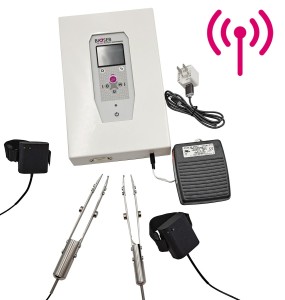Authors
B. K. Beyreuther, N. Callizot, M. D. Brot, R. Feldman, S. C. Bain et al.
Lab
Schwarz BioSciences GmbH, Department of Pharmacology/Toxicology, Monheim, Germany.
Journal
European Journal of Pharmacology
Abstract
Pain is the most common physical symptom of cancer patients, with most patients experiencing more than one site of pain. Current treatments lack full efficacy. Based on the need for new approaches in that field the effect of systemic administration of lacosamide (SPM 927, (R)-2-acetamido-N-benzyl-3-methoxypropionamide, previously referred to as harkoseride or ADD 234037), a member of a series of functionalized amino acids that were specifically synthesized as anticonvulsive drug candidates, was examined in rats in a tumor-induced bone cancer pain model and in a chemotherapy-induced neuropathic pain model. Lacosamide inhibited tactile allodynia (20, 40 mg/kg, i.p.), thermal hyperalgesia (30 mg/kg) and reduced weight-bearing differences (40 mg/kg) in the rat model of bone cancer pain induced by injection of MRMT-1 cells into the tibia. Morphine (5 mg/kg, s.c) was effective inhibiting tactile allodynia and weight bearing but could not reduce thermal hyperalgesia. In the vincristine-induced neuropathic pain model, lacosamide attenuated thermal allodynia, on the cold plate (4 °C), at 10 and 30 mg/kg, and in the warm (38 °C) and hot plate (52 °C) even at 3 mg/kg. Tactile allodynia and mechanical hyperalgesia were inhibited by lacosamide at 10 and 30 mg/kg. In contrast to lacosamide, morphine (3 mg/kg, s.c.) had no effect on mechanical hyperalgesia. Lacosamide is effective as an analgesic in a bone cancer pain model as well as chemotherapy-induced neuropathic pain model in animals and even reduced hyperalgesia where morphine did not (3 or 5 mg/kg, s.c.).
BIOSEB Instruments Used
Rodent pincher - analgesia meter (BIO-RP-M)
Source :
http://www.sciencedirect.com/science/article/pii/S0014299907002828

 Douleur - Allodynie/Hyperalgésie Thermique
Douleur - Allodynie/Hyperalgésie Thermique Douleur - Spontanée - Déficit de Posture
Douleur - Spontanée - Déficit de Posture Douleur - Allodynie/Hyperalgésie Mécanique
Douleur - Allodynie/Hyperalgésie Mécanique Apprentissage/Mémoire - Attention - Addiction
Apprentissage/Mémoire - Attention - Addiction Physiologie & Recherche Respiratoire
Physiologie & Recherche Respiratoire




































 Douleur
Douleur Système Nerveux Central (SNC)
Système Nerveux Central (SNC)  Neurodégénérescence
Neurodégénérescence Système sensoriel
Système sensoriel Système moteur
Système moteur Troubles de l'humeur
Troubles de l'humeur Autres pathologies
Autres pathologies Système musculaire
Système musculaire Articulations
Articulations Métabolisme
Métabolisme Thématiques transversales
Thématiques transversales Congrès & Meetings
Congrès & Meetings 